Sound is Taking Over: Inside Seoul’s Mediacity Bienniale, an Empty Room Speaks
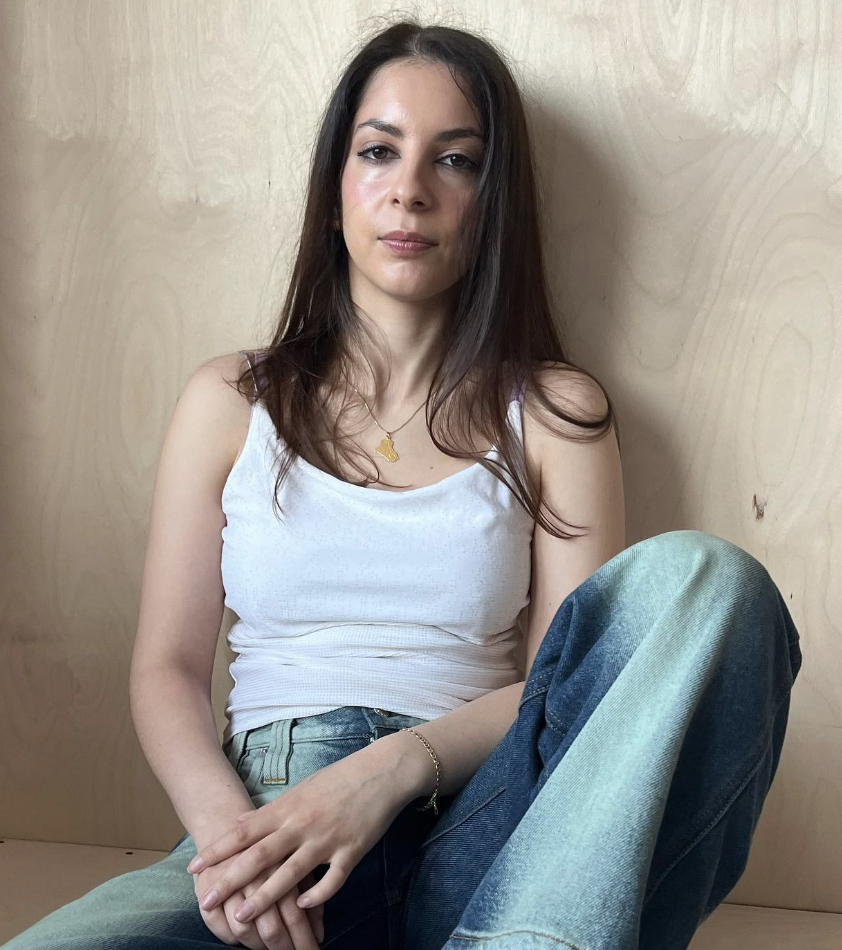

Sound is having a comeback, especially at the 13th Seoul Mediacity Biennale, where Sanna Almajedi’s program explores sound as a critical component of spiritual practices. Rituals are often accompanied by chanting, singing, instrument-playing, and movement, which are central to their dissemination and survival. Think of instrument burning or dance bans as tools to undermine religious and spiritual practices, for instance, and how components from these and other spiritual traditions become revived and re-disseminated through artistic and cultural practice. Sometimes, artists reignite interest in practices and sounds that have lain dormant, or bring their elements to larger or different publics. Almajedi’s program explores these reinterpretations and will mostly take place in the Sound Room, void of physical artworks, at the biennial’s secondary location Nakwon Arcade, and will feature established artists including Aki Onda, La Monte Young, and Genesis P’Orridge, as well as younger artists Yara Mekawei and Areum Lee. Fittingly, it is the largest shopping mall for instruments in the world.
Hosted in Korea’s Seoul Museum of Art (SeMA), as well as the secondary location, the biennial, which opened on August 26th, Séance: Technology of the Spirit, proposes an “exhibition-as-séance,” or a mediation to map modern and contemporary artistic practices’ relationship with spiritism, the occult, mysticism, and syncretic religions. Veering from the usual label as co-curators, Anton Vidokle, Hallie Ayres, and Lukas Brasiskis, all from e-flux, who also curated the Shanghai Biennale Cosmos Cinema, two years ago, have chosen to call themselves artistic directors. Perhaps, as a gesture to re-focus on the art and artists they are presenting instead of their position. The word ‘curator’ is at once watered down for its use beyond the art world and in the art world, trivialized for exceeding its demand. Either way, in Seoul, the trio has continued their inquiry heavily through the lens of video art.
Ahead of Seoul Art Week, opening on Wednesday, our writer Lily Kwak tapped Almajedi (who by the way, is also from the e-flux team) to talk about self-playing instruments, the history of modernism, and the poetics of radio art.
-Anna Mikaela Ekstrand
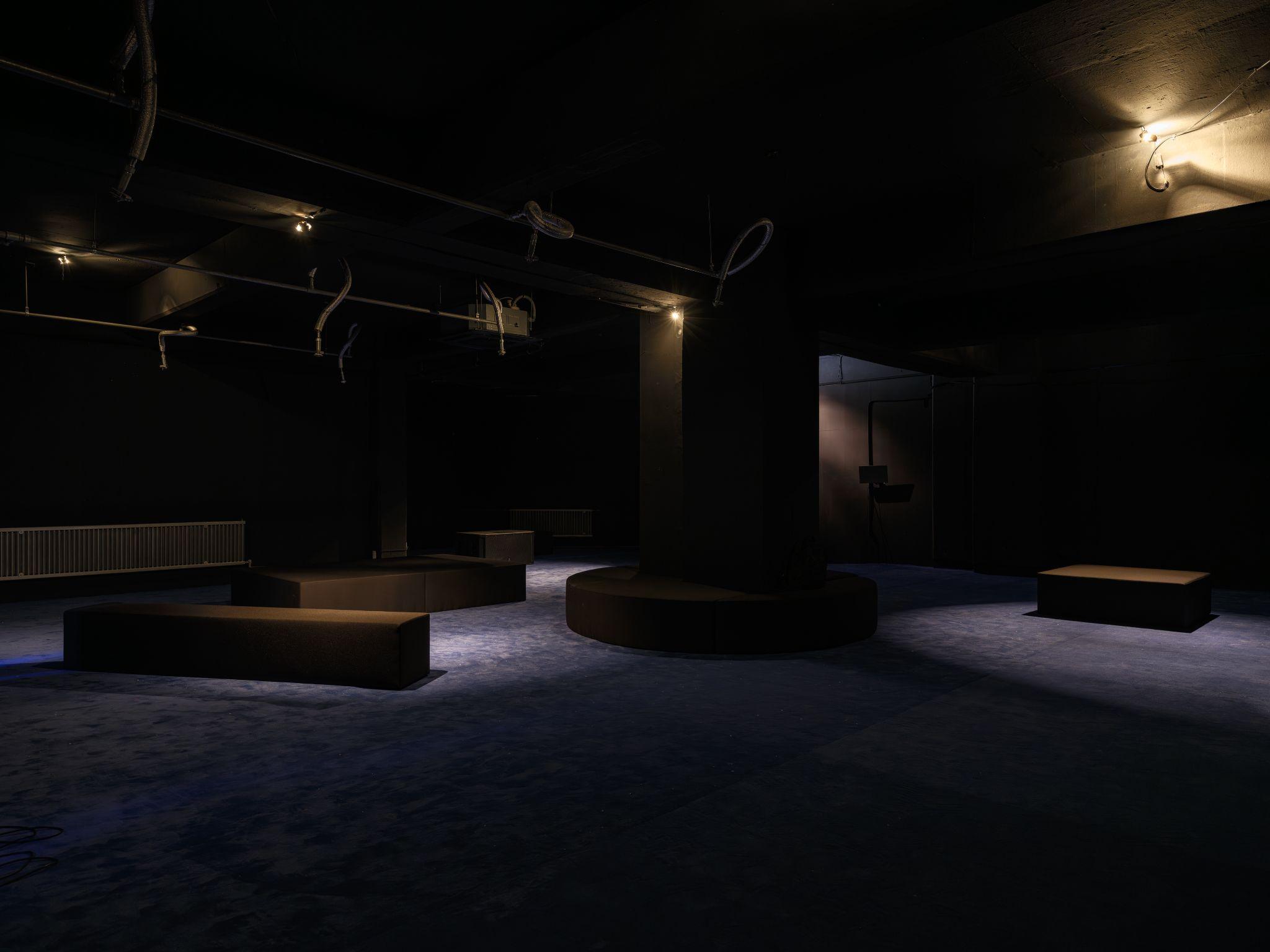
Lily Kwak: I find this year’s Seoul Mediacity Biennale curatorial framework generative in its mapping of local histories, philosophies, cosmologies, and artistic practices. What was your entryway in, and what thought processes guided the frames you set for the performance program?
Sanna Almajedi: I was invited to curate the Sound Room for the Biennial in December, and I immediately thought of Hilma af Klint, who was both a spiritualist and an abstract artist. I began researching Spiritualism, a movement that originated in upstate New York, as well as musical séances, which were mid-to-late 19th-century concerts where audiences would witness pianos playing without a visible person or trumpets floating in the air. It was both entertainment and a way to receive messages from spirits. I also thought of artists like Anri Sala, who has a famous work with self-playing drums that hang upside down from the ceiling. He’s participating in the Seoul Mediacity Biennale but not with this particular work. There have been a few works like this lately, one at the Whitney Museum.
LK: Nikita Gale. Also, Julius Eastman and Glenn Ligon’s show at 52 Walker.
SA: It’s a trend in the art world. There are many artists I thought of when I first started researching, and we [the e-flux team] considered incorporating archival materials and objects, but we decided it would be more valuable to create an experience focusing on sound. There are no objects in the room. Sound is the main artwork and the main subject.
LK: The curator, Maurice Tuchman, reoriented the history of modernism in the 80s around the spiritual, occult, and religious practices that abstract artists like Agnes Martin were inspired by, which had been latent in part due to its political associations, including Nazism.
SA: When I started drawing a timeline of abstract art, Fluxus, and then more contemporary works, I began thinking about spiritualism as a movement inspired by Buddhism and shamanism. It became a much broader subject when contextualized within Seoul, where shamanism is not only relevant to folk art, but also to the works of many contemporary artists that are defining what a shaman is, their role within society, and how they can be caretakers or mediators between us and other worlds.
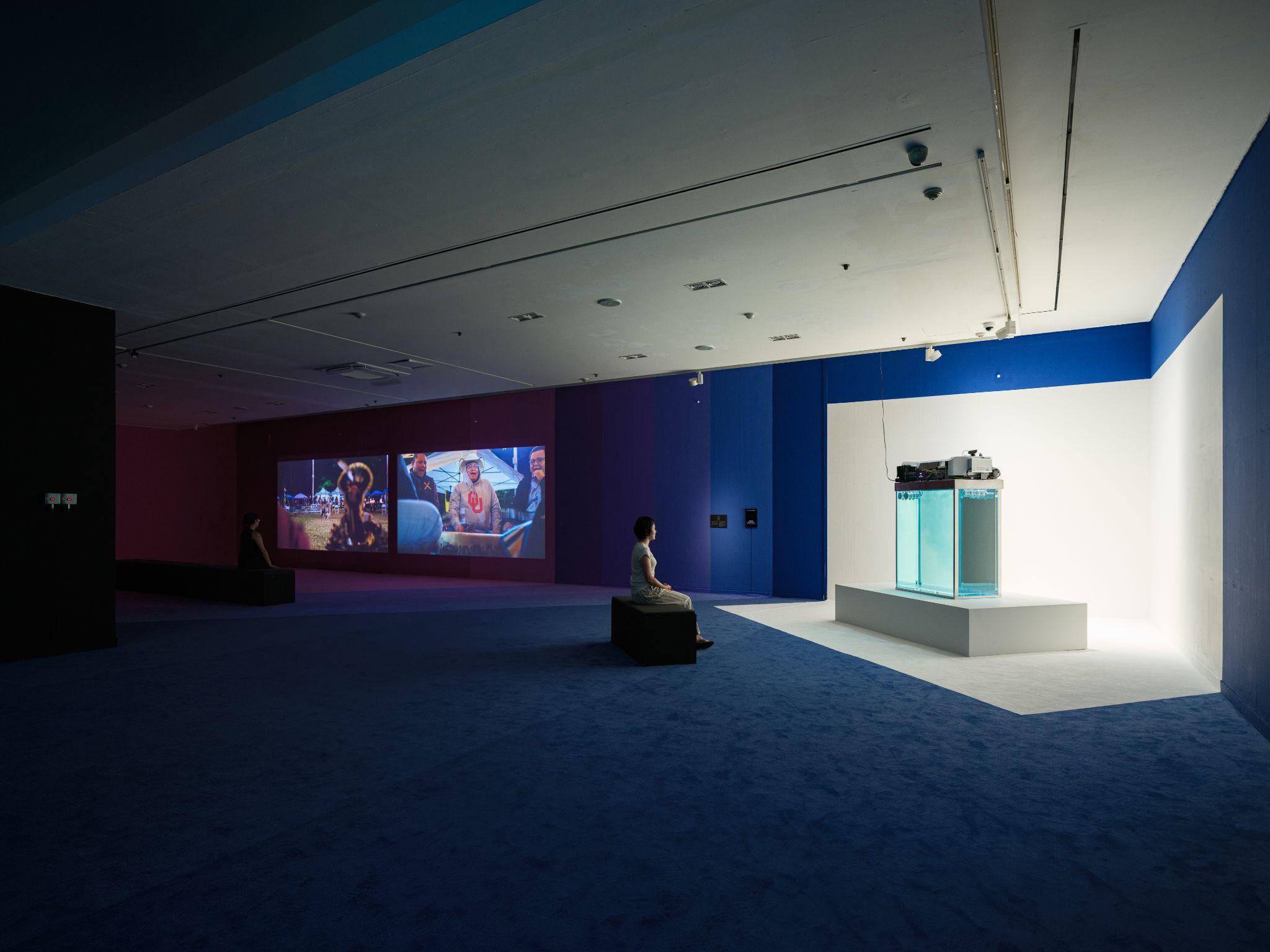
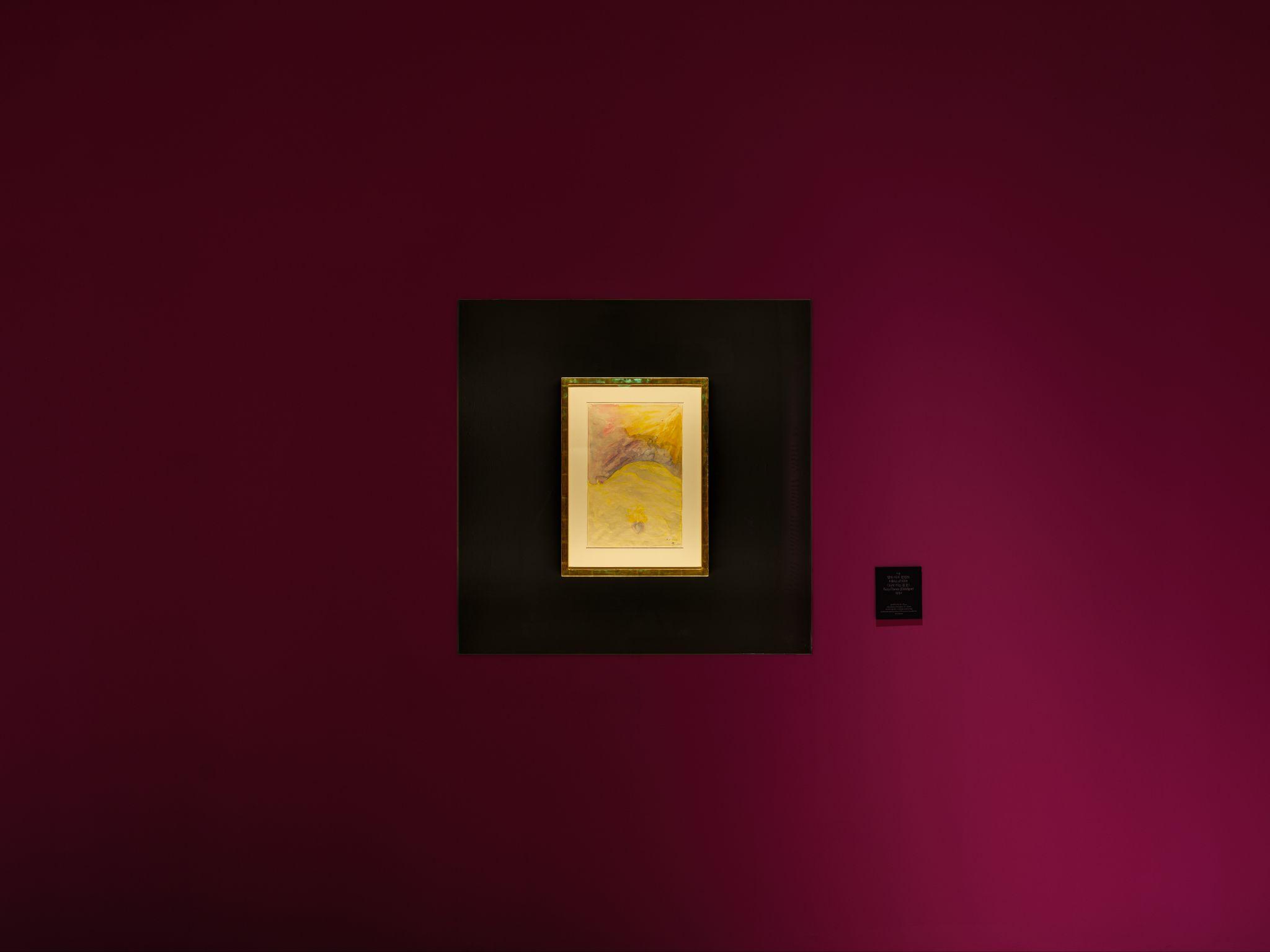
LK: The Sound Room is hosted in an off-site venue to the Seoul Museum of Art (SeMA), the Nakwon Sangga Arcade. How did the spatial and conceptual architecture of this venue inform your program?
SA: Nakwon Sangga is one of the oldest and largest instrument shopping malls in the world. It formed in the sixties because there were already vendors outside, just like many buildings in New York City, like Essex Market, started. Then, with the economic boom and the increasing cultural investment in Korea in the 60s and 70s, nightclubs and cafés grew in the neighbourhood. That meant more music instrument shops moved into the building. Musicians used to post up there and wait to be called to play a gig. Even in the Joseon Dynasty, this neighborhood was an entertainment area. The city wanted to tear it down in 2007, but the people protested. This is also why we didn’t want to put objects in the room, because the arcade is already filled with objects.
LK: The biennale is not interested in showcasing technologies dependent on the extractivist logics of industrial capitalism, but in expanding the definition of technology to artistic and spiritual practices. Right now, digitalization, algorithmic automation, and the deployment of artificial intelligence is transforming our means of production and communication, and is inextricably intertwined with populism, nationalism, and fascism. Then there is of course a recurring affective and perceptual response to these new technologies, and a returning interest in spiritual practices in contemporary art. How does this context inform how you’re thinking of technology, or technē, in regards to your curatorial program?
SA: What was most fascinating to me is how artists appropriated technology, in this case to communicate with spirits. The radio and recorded music largely changed the way we relate to sound and hear our surroundings, just like photography changed the way we look at the world. Artists and researchers used different radio frequencies to detect voices. The Swedish researcher Frederick Jorgensen wrote a book in 1964 called Rösterna från Rymden, which means “voices from space.” When he used a tape recorder and a microphone to record birds, he listened back to his recording and detected his mom’s voice. He then developed a methodology where he’d ask questions, wait for a response, and listen back to the recording at a lower speed to hear the spirit’s voice. Later on, upon the advice of one of his spirits, he began using a radio to conduct séances. The psychologist Constantine Radus developed this method and coined the term Electronic Voice Phenomenon (EVP), a methodology to speak with the dead using recording devices. Now there’s websites that will sell you EVP devices, and ghost hunters use them.
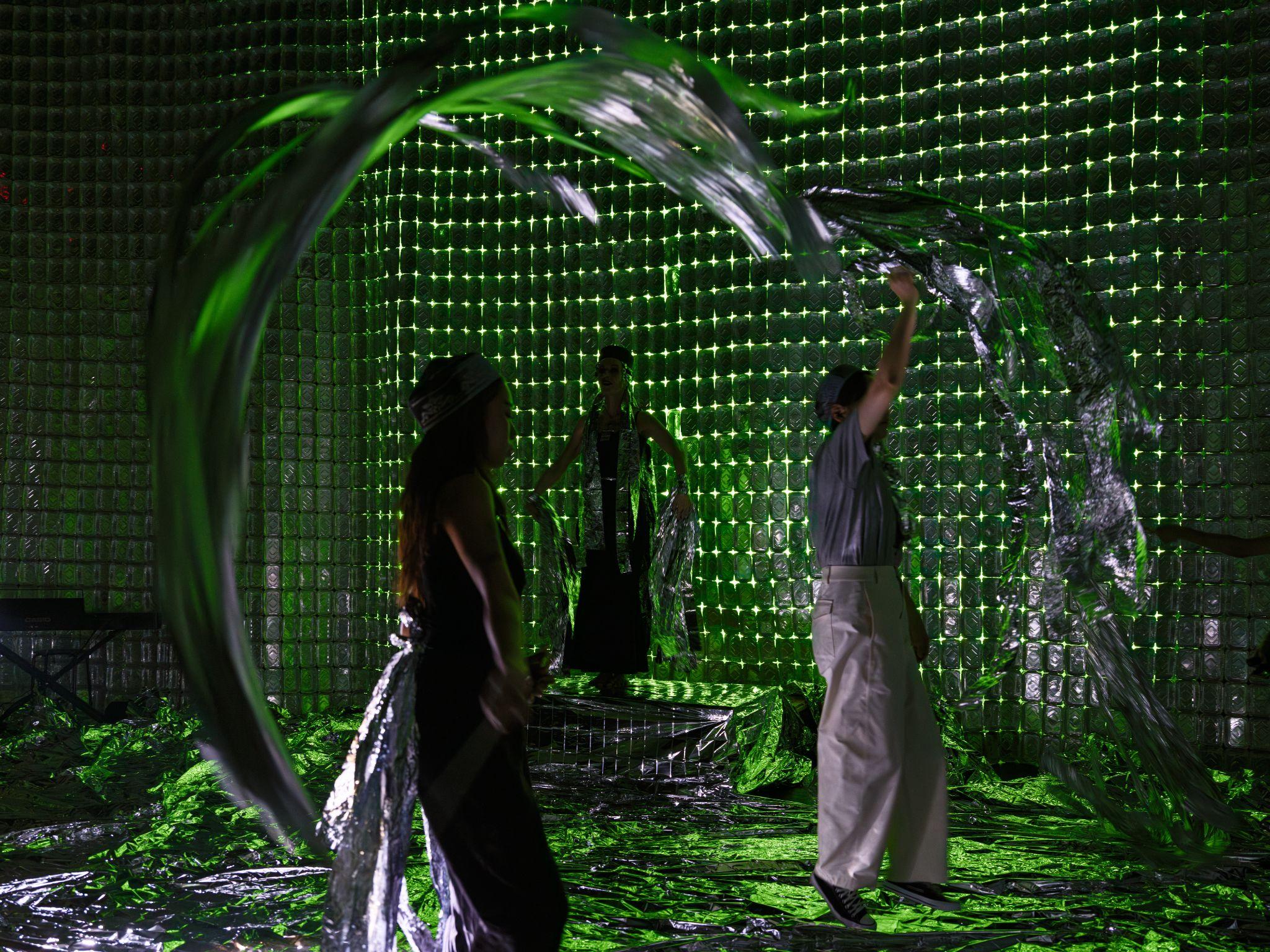
LK: It’s interesting to think about how people have conceived of contemporaneous technologies’ relationship to consciousness and the divine, from chance divination to combinatorics, and so on. The shift from modes to frequencies, in terms of how ancient Greek philosophers and Western musicology categorized specific musical modes and argued their conductivity to harmony, to the divine, and thereby its significance to ethics, politics, and cosmology, is interesting as well. Tell me more about how you homed into upstate New York.
SA: Yes, exactly. I researched the world’s oldest and largest spiritualist community called Lily Dale. It’s a lone village, and everybody who lives in it is a medium.
LK: Is this close to where Spiritualism is claimed to have originated, with Kate and Margaret Fox in 1848?
SA: Yes! There’s a documentary on HBO called No One Dies in Lily Dale from 2010. Many people who lose their loved ones visit their mediums, but I think some of the mourning is related to the fact that they killed Native Americans and their spirits were haunting them. Native American imagery is very present within these communities. There is a Native American medium who used to live in Lily Dale as well.
LK: That’s interesting. Anton had told me that the Post family in Rochester, who took in the two Fox sisters, were abolitionists and women’s rights advocates.
SA: I didn’t know that!
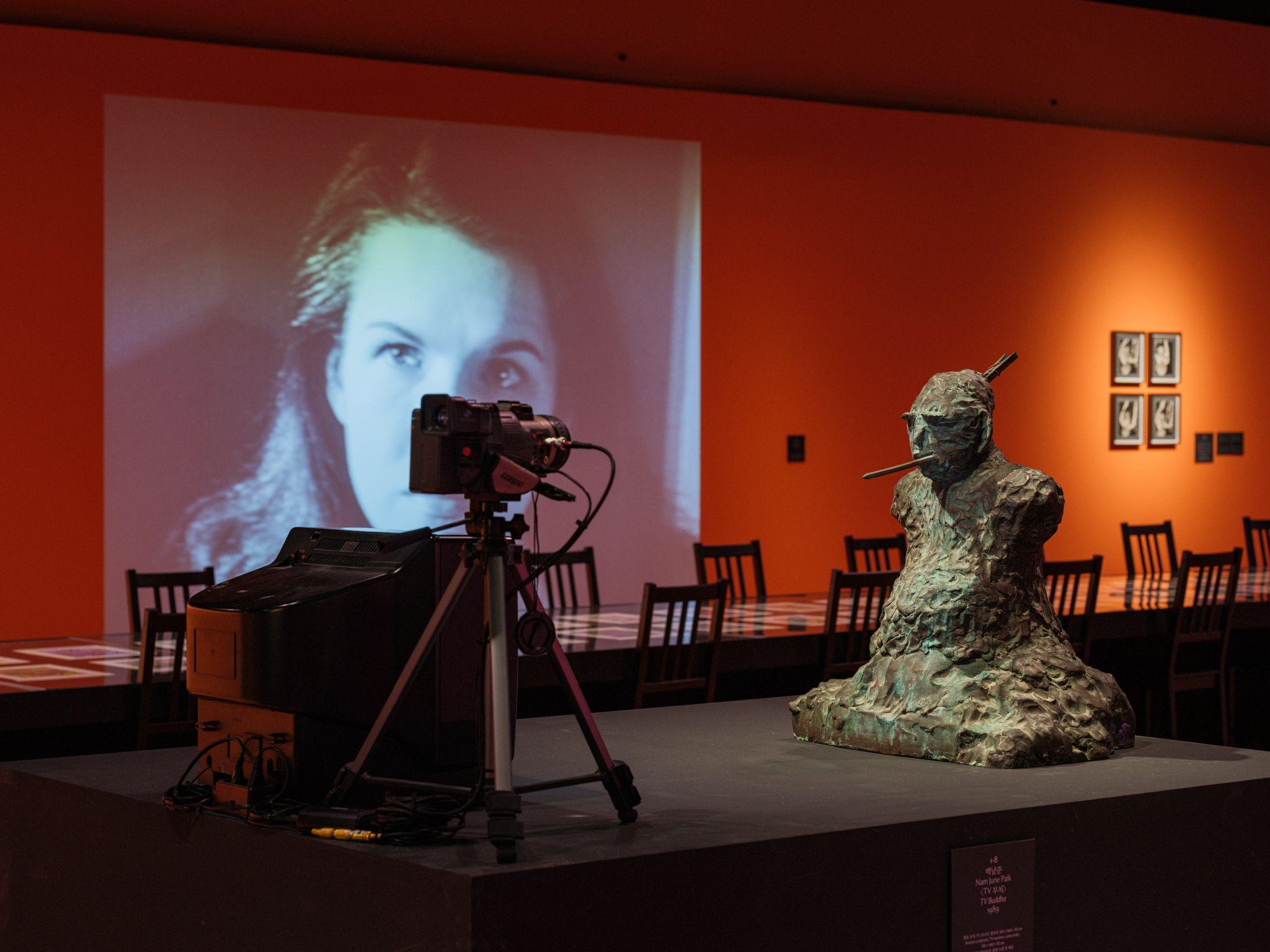
LK: To return to frequencies, I’m interested in Aki Onda’s 2023 work in the program, Transmissions from the Radio Midnight Part 1. Onda brought a handheld AM/FM radio and cassette recorder on his travels across four continents over the course of twelve years, recording conversations over the air (in Swedish, Arabic, Spanish, Polish, French, Korean, and some English), then collaging the frequencies. How are you thinking about his work in reference to your program?
SA: Aki Onda is very influenced by Nam June Paik. Aki is part Korean and was very influenced by shamanism from an early age and has also done research on EVP [Electronic Voice Phenomenon]. He did a residency in 2010 for at the Nam June Paik Arts Center and was surrounded by the works of Nam June, with whom he felt he had a close kinship with. While he was in a hotel room, he shuffled through radio stations and found a cryptic message that he translated as a message directly from Nam June to him. That’s when he began performing séances to communicate with Nam June over the span of several years and in different continents. Aki once told me that radio is an electromagnetic phenomena sending waves through short and long distances. Light and sound are the same, and their frequencies can be used for transmission. The essence of séance is sharing energy, a phenomena that we experience and feel. Nam June also used shamanistic rituals to honor his colleagues when they passed away, like George Maciunas and Joseph Beuys.
LK: I love the polyphony in Aki Onda’s Transmissions, and the idea that the semantics are lost in translation. There are these blind female shamans in Japan’s Mount Osore called itako, whose material voice plays a significant role in facilitating mourning, rather than the words uttered. Onda calls his composition “sound poetry,” which heightens the significance of the aural textures of language, as well as its perceptive and affective powers, which is how I was attuned to language for a long time. I’m also curious about Onda’s ritualized practice of listening to the radio late at night while traveling, and I’m wondering how you think about the rituals involved in performance-making, and the role that performance plays in numerous kinds of rituals, whether cultural, religious, political, or legal?
SA: I think listening is, in itself, ritualistic. It’s a practice you have to learn, from what we decide to tune into and block out in everyday life. It’s cultural, but also a concept that, for example, Pauline Oliveros famously wrote about in her book Deep Listening. She says, “Listen to everything all the time and remind yourself when you are not listening.” Listening is also a huge part of Annea Lockwood’s practice. Her compositions are just a fragment of her practice, because her rituals in upstate New York, where she lives, consists of going to the river by her house, dropping a microphone into the water, and spending hours just listening. It becomes a meditative practice.
LK: About half of the works you’re presenting are by artists now-deceased, so you’re staging dialogues between artists across time, but it seems you’re furthermore interested in more direct transmissions with the dead explored by artists using new technologies of mediation, in Annea Lockwood and Ruth Anderson’s works, for example.
SA: Ruth brought Annea to the United States when she was working at Hunter College. They were partners, and in 1973, when Annea first moved to the US, they started having lengthy phone conversations. Ruth was secretly recording them, and she made a collage of excerpts of them laughing and saying sweet, endearing words to each other. She made this composition and gifted it to Annea privately a year later. When Ruth passed away, Annea did a similar thing, where she collaged fragments of their conversations with field recordings from Ruth’s resting place. Lockwood recreates the intimate acoustic relationships the couple once shared using sound to conjure the texture of life and emulate the enduring presence of love beyond death.
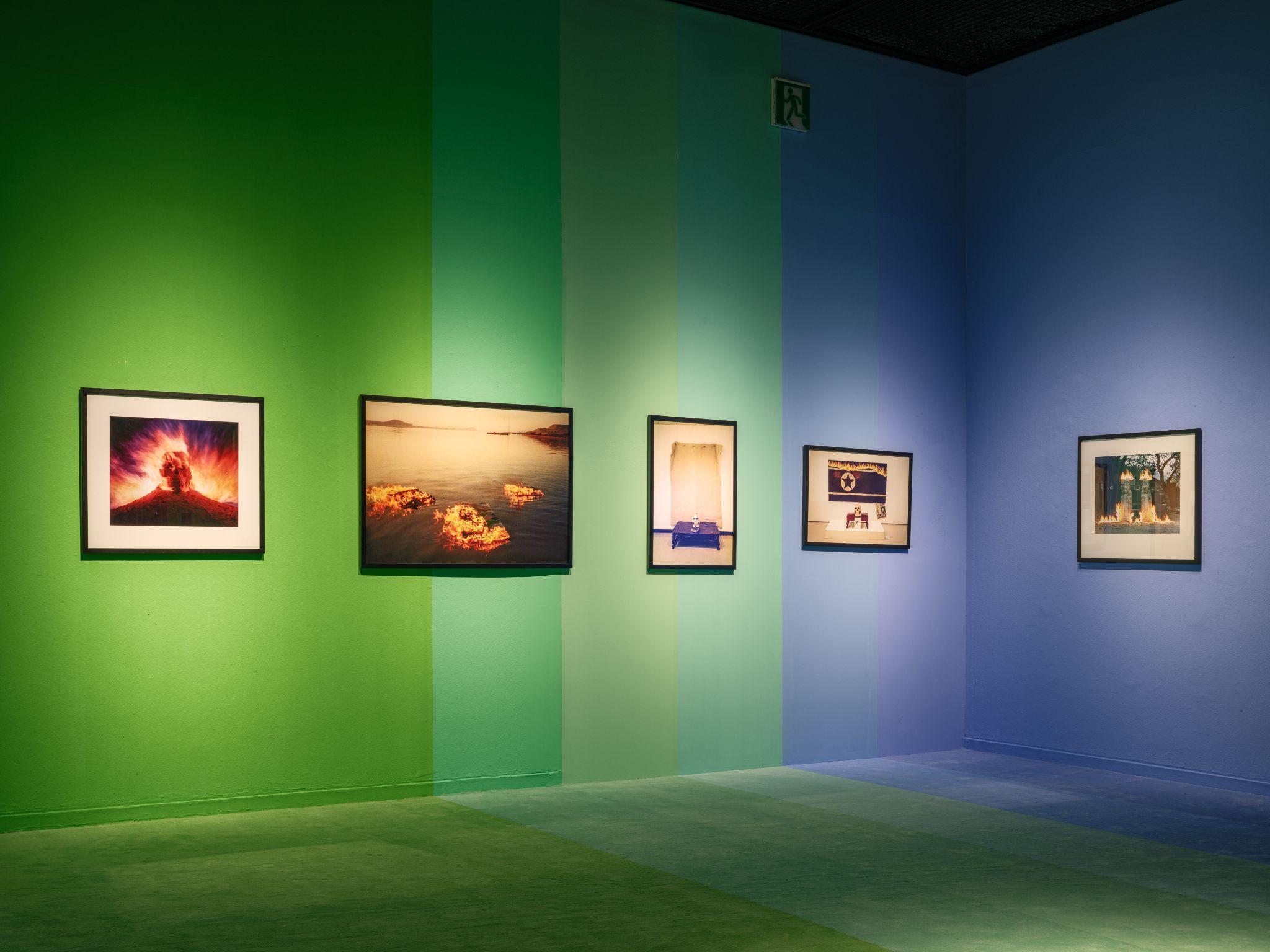
LK: Thinking about the sites that Onda traversed, and collected scraps from, for his Transmissions project, as well as Lockwood visiting Anderson’s resting place, how do you think about sound’s connection to land? Native Americans believe the drum to be the heartbeat of Earth. In Hindu cosmology, the Om is a primordial sound that created the universe, with all existence beginning through vibration.
SA: Every culture has instruments created specifically for their spiritual practices. Aki Onda has a performance that uses a collection of bells. Apparently, he has thousands of bells. Many of the artists in the program use indigenous practices within their contemporary work. For example, La Monte Young uses the gong in his work. Jocy de Oliviera’s piece, Raga in the Amazonia, takes concepts from raga to create an ode to the Amazon rainforest. While it’s not traditional Indian music, she uses its sentiment or spirit to create an emotional conversation about land through ecological themes. Walter Smetak, a Swiss artist, spent his whole musical career in Brazil, and he created instruments influenced by indigenous instruments, using PVC pipes and natural material to create surrealist-style instruments. There are many indigenous instruments from South America used to communicate with the dead too, like flutes from Peru. I didn’t want the show to become ethnographic, however. There’s a very interesting discourse around how to present sound without making it about something else. Some of the most major sound art exhibitions have been just about “sound art” rather than about a specific topic. They say, “These are artists who are contemporary, but they use sound.” That’s like saying, “These are artists that use painting.” I didn’t want to take away from the sound being the actual artwork.
LK: Though there is increasing foreign interest in Seoul’s contemporary art scene, this is a biennial that the Seoul art world and general public will largely witness. Seoul is interesting in that it’s a capitalist city with huge corporations like Hyundai funding the arts at a global scale. This biennale began in 2000 as part of the government’s Millennium Project, which implicates the city’s motivations in establishing itself at the helm of technological innovation and cultural production. Korea is a pawn of the US, especially since the end of the Korean War, but at the same time, ancient and traditional systems continue to structure everyday life and are embodied by the people. How do you think about this context, and second, how are you thinking about the dialogue with the audience that your program might prompt?
SA: The Nakwon Center, built postwar, is a symbol of Korea’s investment in culture. Karaoke and DJ sets make up a huge part of contemporary Korean culture, but I think the fact that this venue still exists is an example of how Korea holds on to its past. Contemporary Korean artists are also very interested in shamanism, its history, and how to incorporate technology with ancient practices. I’m looking forward to bridging a transnational dialogue.
The 13th Seoul Mediacity Biennale Séance: Technology of the Spirit is open through November 23, 2025.
You Might Also Like
Nikita Gale Loosens Attitudes Around Sound With Her Performa 2023 Commission
A Variety Show Demanding Balls Fly at Center for Performance Research
What's Your Reaction?
Lily Kwak is a writer and performance curator based in New York City. She holds a BA in comparative literature from Columbia University.

